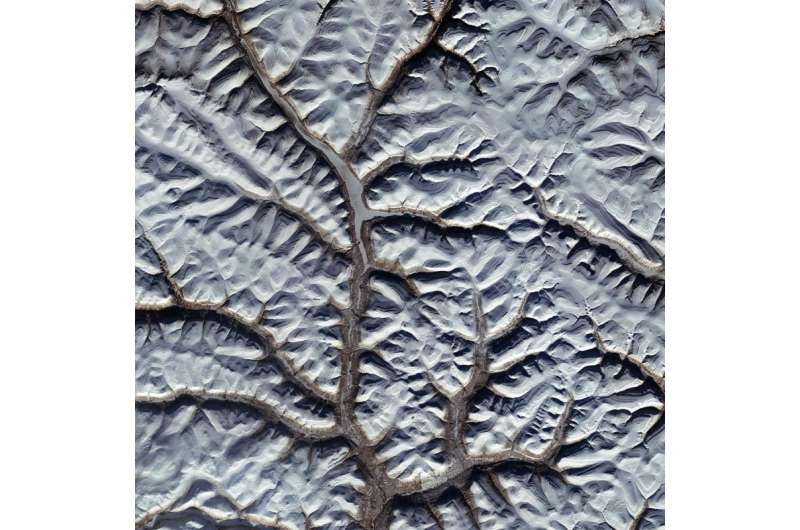Image: Sentinel-2A captures Putorana Plateau, Siberia

Sentinel-2A brings us over the snowy landscape of the Putorana Plateau in northern Central Siberia.
The area pictured shows part of the Putoransky State Nature Reserve, which is listed as a UNESCO World Heritage Site. Situated about 100 km north of the Arctic Circle, the site serves as a major reindeer migration route – an increasingly rare natural phenomenon – and is one of the very few centres of plant species richness in the Arctic.
Virtually untouched by human influence, this isolated mountain range includes pristine forests and cold-water lake and river systems. The lakes are characterised by elongated, fjord-like shapes, such as Lake Ayan in the upper-central part of the image.
Zooming in on the lake we can see that it is mostly ice-covered, with small patches of water peeking through around its lower reaches.
Another feature of this area are the flat-topped mountains, formed by a geological process called 'plume volcanism': a large body of magma seeped through Earth's surface and formed a blanket of basalt kilometres thick. Over time, cracks in the rock filled with water and eroded into the rivers and lakes we see today.
Provided by European Space Agency




















